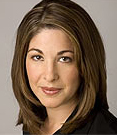|
"Those who want to see this city rebuilt want to see it done in a completely different way: demographically, geographically and politically."
-- James J. Reiss
|
Old-Line Families Escape Worst of Flood and Plot the Future
NEW ORLEANS — On a sultry morning earlier this week, Ashton O'Dwyer stepped out of his home on this city's grandest street and made a beeline for his neighbor's pool. Wearing nothing but a pair of blue swim trunks and carrying two milk jugs, he drew enough pool water to flush the toilet in his home.
The mostly African-American neighborhoods of New Orleans are largely underwater, and the people who lived there have scattered across the country. But in many of the predominantly white and more affluent areas, streets are dry and passable. Gracious homes are mostly intact and powered by generators. Wednesday, officials reiterated that all residents must leave New Orleans, but it's still unclear how far they will go to enforce the order.
The green expanse of Audubon Park, in the city's Uptown area, has doubled in recent days as a heliport for the city's rich — and a terminus for the small armies of private security guards who have been dispatched to keep the homes there safe and habitable. Mr. O'Dwyer has cellphone service and ice cubes to cool off his highballs in the evening. By Wednesday, the city water service even sprang to life, making the daily trips to his neighbor's pool unnecessary. A pair of oil-company engineers, dispatched by his son-in-law, delivered four cases of water, a box of delicacies including herring with mustard sauce and 15 gallons of generator gasoline.
Despite the disaster that has overwhelmed New Orleans, the city's monied, mostly white elite is hanging on and maneuvering to play a role in the recovery when the floodwaters of Katrina are gone. "New Orleans is ready to be rebuilt. Let's start right here," says Mr. O'Dwyer, standing in his expansive kitchen, next to a counter covered with a jumble of weaponry and electric wires.
 |
Blackwater Mercenary at New Orleans Residence
(Photo from Google Images; original source unknown.) |
More than a few people in Uptown, the fashionable district surrounding St. Charles Ave., have ancestors who arrived here in the 1700s. High society is still dominated by these old-line families, represented today by prominent figures such as former New Orleans Board of Trade President Thomas Westfeldt; Richard Freeman, scion of the family that long owned the city's Coca-Cola bottling plant; and William Boatner Reily, owner of a Louisiana coffee company. Their social pecking order is dictated by the mysterious hierarchy of "krewes," groups with hereditary membership that participate in the annual carnival leading up to Mardi Gras. In recent years, the city's most powerful business circles have expanded to include some newcomers and non-whites, such as Mayor Ray Nagin, the former Cox Communications executive elected in 2002.
A few blocks from Mr. O'Dwyer, in an exclusive gated community known as Audubon Place, is the home of James Reiss, descendent of an old-line Uptown family. He fled Hurricane Katrina just before the storm and returned soon afterward by private helicopter. Mr. Reiss became wealthy as a supplier of electronic systems to shipbuilders, and he serves in Mayor Nagin's administration as chairman of the city's Regional Transit Authority. When New Orleans descended into a spiral of looting and anarchy, Mr. Reiss helicoptered in an Israeli security company to guard his Audubon Place house and those of his neighbors.
|
|
He says he has been in contact with about 40 other New Orleans business leaders since the storm. Tomorrow, he says, he and some of those leaders plan to be in Dallas, meeting with Mr. Nagin to begin mapping out a future for the city.
The power elite of New Orleans — whether they are still in the city or have moved temporarily to enclaves such as Destin, Fla., and Vail, Colo. — insist the remade city won't simply restore the old order. New Orleans before the flood was burdened by a teeming underclass, substandard schools and a high crime rate. The city has few corporate headquarters.
The new city must be something very different, Mr. Reiss says, with better services and fewer poor people. "Those who want to see this city rebuilt want to see it done in a completely different way: demographically, geographically and politically," he says. "I'm not just speaking for myself here. The way we've been living is not going to happen again, or we're out."
 Naomi Klein
Naomi Klein(Photo by Andrew Stern) |
The flooding of New Orleans was a tragedy, but it was also an opportunity to radically remake the education system.
--Milton Friedman From an interview of Naomi Klein by Kai Ryssdal for Marketplace, September 26, 2007 (4 min, 25 sec.). Source: http://marketplace.publicradio.org/display/web/2007/09/26/shock_doctrine, accessed 09/30/07. Klein's latest book is The Shock Doctrine: The Rise of Disaster Capitalism, Henry Holt & Co., New York, 2007. |
Not every white business leader or prominent family supports that view. Some black leaders and their allies in New Orleans fear that it boils down to preventing large numbers of blacks from returning to the city and eliminating the African-American voting majority. Rep. William Jefferson, a sharecropper's son who was educated at Harvard and is currently serving his eighth term in Congress, points out that the evacuees from New Orleans already have been spread out across many states far from their old home and won't be able to afford to return. "This is an example of poor people forced to make choices because they don't have the money to do otherwise," Mr. Jefferson says.
Calvin Fayard, a wealthy white plaintiffs' lawyer who lives near Mr. O'Dwyer, says the mass evacuation could turn a Democratic stronghold into a Republican one. Mr. Fayard, a prominent Democratic fund-raiser, says tampering with the city's demographics means tampering with its unique culture and shouldn't be done. "People can't survive a year temporarily — they'll go somewhere, get a job and never come back," he says.
Mr. Reiss acknowledges that shrinking parts of the city occupied by hardscrabble neighborhoods would inevitably result in fewer poor and African-American residents. But he says the electoral balance of the city wouldn't change significantly and that the business elite isn't trying to reverse the last 30 years of black political control. "We understand that African Americans have had a great deal of influence on the history of New Orleans," he says.
|
“It would be so sad if New Orleans never became what it was before. But you
have to hope that it can. It is more important than you could ever know.”
-- Toni Morrison, April 12, 2007
|
A key question will be the position of Mr. Nagin, who was elected with the support of the city's business leadership. He couldn't be reached Wednesday. Mr. Reiss says the mayor suggested the Dallas meeting and will likely attend when he goes there to visit his evacuated family.
Black politicians have controlled City Hall here since the late 1970s, but the wealthy white families of New Orleans have never been fully eclipsed. Stuffing campaign coffers with donations, these families dominate the city's professional and executive classes, including the white-shoe law firms, engineering offices, and local shipping companies. White voters often act as a swing bloc, propelling blacks or Creoles into the city's top political jobs. That was the case with Mr. Nagin, who defeated another African American to win the mayoral election in 2002.
Creoles, as many mixed-race residents of New Orleans call themselves, dominate the city's white-collar and government ranks and tend to ally themselves with white voters on issues such as crime and education, while sharing many of the same social concerns as African-American voters. Though the flooding took a toll on many Creole neighborhoods, it's likely that Creoles will return to the city in fairly large numbers, since many of them have the means to do so.
Those who wanted a different New Orleans rebuilt probably see the selective displacement as a success. The reduction directly helps Republicans who have fought for years to reduce the impact of the overwhelmingly Democratic New Orleans on statewide politics in Louisiana.
- Bill Quigley, "Half of New Orleans' poor permanently displaced: Failure or success?" The Louisiana Weekly, March 10, 2008, http://www.louisianaweekly.com/weekly/news/articlegate.pl?20080310m, accessed 03/10/08.
From: The Wall Street Journal, September 8, 2005. Gary Fields and Ann Carrns contributed to this article. Reprinted in accordance with the "fair use" provision of Title 17 U.S.C.
|
|
KATRINA HOLDOUTS
|